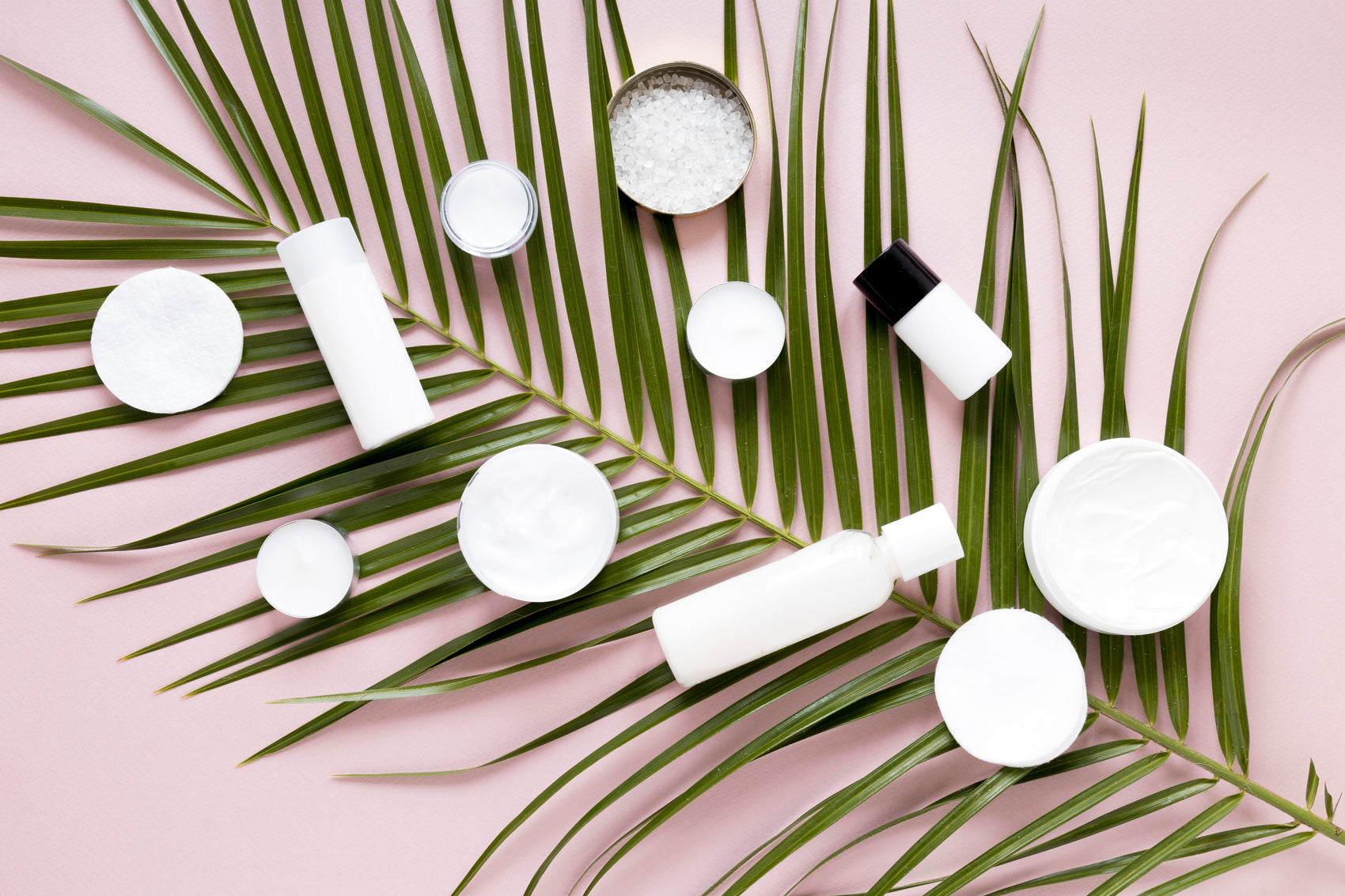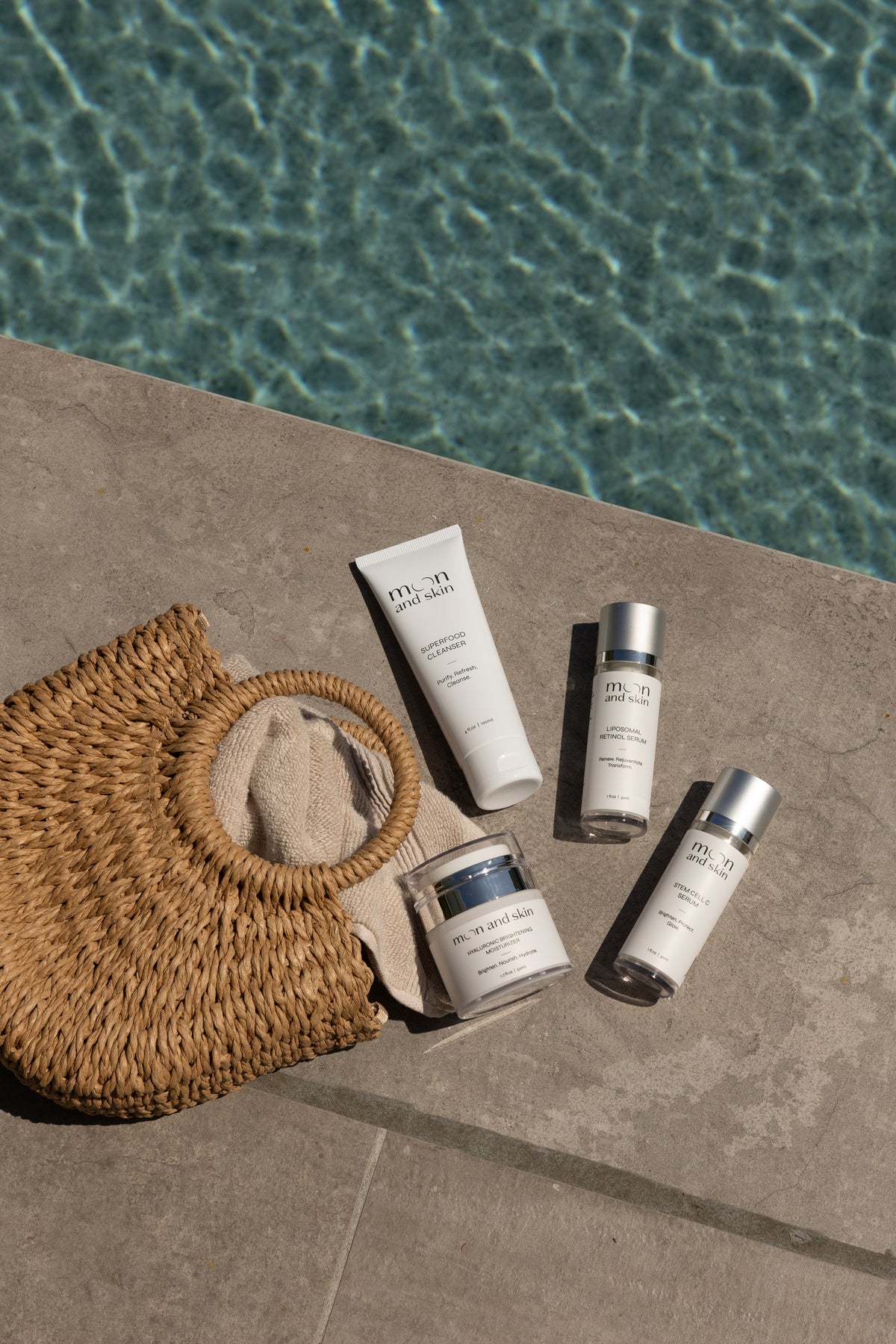Table of Contents
Introduction
Did you know that over 90% of skin aging is caused by sun exposure? This statistic might come as a surprise, but it underscores the crucial role that sunscreen plays in our daily skincare routines. At Moon and Skin, we understand that navigating the world of skincare can be overwhelming, especially when it comes to incorporating effective sun protection into your regimen.
As we embrace the changing seasons, it's more important than ever to revisit our skincare habits. Sunscreen is not just for beach days; it should be a non-negotiable part of our daily routine, regardless of the weather. In this blog post, we will explore the best practices regarding when to apply sunscreen in your routine, how much to use, and why it’s integral to maintaining healthy skin at every phase of life. Together, we'll break down the essentials of sun protection, ensuring you feel empowered to make informed decisions about your skincare.
The Importance of Sunscreen
As we embark on this journey, it's vital to recognize that sunscreen is more than just a product; it's a commitment to safeguarding our skin from harmful UV rays. We will cover:
- The types of sunscreen available and their benefits
- The ideal time to apply sunscreen in your skincare routine
- How to layer products effectively
- Tips for ensuring optimal protection throughout the day
- The role of SPF in daily skincare
By understanding these key points, we can make informed choices to protect our skin from the sun's harmful effects.
Understanding Sunscreen: Types and Benefits
Before we delve into the specifics of application, let’s first understand the different types of sunscreen available on the market and their respective benefits.
Chemical vs. Mineral Sunscreens
Sunscreens generally fall into two categories: chemical and mineral (also known as physical) sunscreens.
- Chemical sunscreens contain organic compounds that absorb UV radiation. Common ingredients include avobenzone, octisalate, and octocrylene. These formulations tend to be lighter and are often preferred for daily wear, as they absorb quickly into the skin and leave little to no residue.
- Mineral sunscreens, on the other hand, contain active mineral ingredients like zinc oxide or titanium dioxide. These ingredients sit on the skin's surface and physically block UV rays. Mineral sunscreens are often recommended for sensitive skin as they are less likely to cause irritation.
Why You Need Sunscreen
The benefits of using sunscreen are manifold:
- Prevention of Skin Cancer: Regular use of sunscreen can significantly reduce the risk of developing skin cancers, including melanoma, the deadliest form.
- Combat Premature Aging: By protecting against harmful UV rays, sunscreen helps prevent premature aging signs like wrinkles, fine lines, and age spots.
- Maintaining Even Skin Tone: Sunscreen can help prevent hyperpigmentation and maintain an even skin tone, allowing us to feel more confident in our skin.
At Moon and Skin, we believe in the power of clean, thoughtful formulations. Our Superfood Cleanser is an excellent first step in your routine, ensuring your skin is prepped and ready to absorb the benefits of sunscreen.
When to Apply Sunscreen in Your Routine
Now that we understand the importance of sunscreen, let's discuss the best time to apply it in your skincare routine.
Morning Routine: The First Line of Defense
Sunscreen should be applied every morning, regardless of whether you plan to spend time outdoors. Here's how to integrate it into your routine effectively:
- Cleanse: Start with our Superfood Cleanser to remove impurities and prep your skin.
- Tone (Optional): If you use a toner, apply it after cleansing to balance your skin's pH.
- Serums: Apply any serums you use, such as our Stem Cell C Serum, which hydrates and protects with stable vitamin C.
- Moisturizer: Follow up with a moisturizer to lock in hydration. Our Hyaluronic Brightening Moisturizer is an excellent choice that hydrates and brightens your skin.
- Sunscreen: After your moisturizer, apply your sunscreen. It's essential to use a broad-spectrum sunscreen with an SPF of at least 30 to protect against both UVA and UVB rays. Ensure you apply it generously to all exposed areas of skin, including your face, neck, ears, and any other areas not covered by clothing.
- Makeup (If Applicable): If you wear makeup, allow your sunscreen to absorb for at least 5-10 minutes before applying any makeup products.
The Importance of Reapplication
Sunscreen is not a one-and-done application. To ensure continuous protection, it should be reapplied every two hours, especially if you’re spending time outdoors or sweating. Here are tips for reapplying:
- Use a Powder Sunscreen: Many brands offer sunscreen powders that can be easily applied over makeup without disrupting your look.
- Sunscreen Sprays: Another convenient option is a spray sunscreen, which can be misted over the face and body.
- Keep a Bottle Handy: Having a bottle of sunscreen at your desk or in your bag can serve as a reminder to reapply throughout the day.
Key Takeaways
- Sunscreen should be applied every morning, even on cloudy days.
- It’s vital to reapply every two hours for optimal protection.
- Adapt your application method based on your daily activities and routines.
Layering Products: The Right Order Matters
Understanding the right order to layer your skincare products can significantly enhance their effectiveness, especially when incorporating sunscreen.
The Correct Sequence
- Cleanser: Start with a clean canvas using our Superfood Cleanser.
- Toner/Essence: If you use these, apply them next.
- Serums: Apply any active serums next to target specific skin concerns, such as our Liposomal Retinol Serum for anti-aging benefits.
- Moisturizer: Follow up with a moisturizer for hydration.
- Sunscreen: Finally, apply sunscreen as the last step in your morning skincare routine.
Why the Order Matters
Applying sunscreen last ensures that it forms a protective barrier on your skin, preventing UV rays from penetrating your other skincare products. If you apply sunscreen before your moisturizer or serums, it may not be as effective because it could be absorbed into these products instead of sitting on the surface to block UV rays.
Key Takeaways
- Always apply sunscreen as the last step in your skincare routine.
- Ensure each product has had time to absorb before applying the next.
- The right order maximizes the benefits of each product while ensuring effective sun protection.
How Much Sunscreen Should You Use?
Applying the correct amount of sunscreen is crucial for achieving the stated SPF protection. Here’s what dermatologists recommend:
The Rule of Thumb
- For the face and neck, you should apply about a nickel-sized amount of sunscreen.
- For the entire body, approximately one ounce (the amount needed to fill a shot glass) is recommended for full coverage.
Application Tips
- Be Generous: Many people do not apply enough sunscreen to achieve the full SPF listed on the label. Don’t skimp; make sure you apply a sufficient amount to all exposed areas.
- Don’t Forget Commonly Missed Areas: Be sure to cover your ears, the back of your neck, and the tops of your feet.
- Reapply: Remember, reapplication every two hours is essential for maintaining protection, especially if you’re swimming or sweating.
Key Takeaways
- Use a nickel-sized amount for your face and neck; one ounce for full body coverage.
- Ensure thorough application to all exposed areas.
- Reapply every two hours for optimal protection.
The Role of SPF in Daily Skincare
SPF (Sun Protection Factor) measures how well a sunscreen protects your skin from UVB rays, the type that cause sunburn. Understanding SPF is essential for selecting the right sunscreen for your needs.
Choosing the Right SPF
- SPF 30: Offers 97% protection against UVB rays. This is the minimum recommended for daily use.
- SPF 50: Offers approximately 98% protection, ideal for long days outdoors or high sun exposure.
- SPF 60 or Higher: Provides marginally better protection, which may be necessary for those with higher sun sensitivity.
The Myth of Higher SPF
While higher SPF may seem better, it’s important to note that no sunscreen can block 100% of UV rays. Proper application and reapplication are just as vital as the SPF rating.
Key Takeaways
- SPF 30 is the minimum recommended for daily use.
- Higher SPF provides slightly better protection but does not eliminate the need for proper application or reapplication.
- Always select a broad-spectrum sunscreen to protect against both UVA and UVB rays.
Tips for Ensuring Optimal Protection
To maximize the effectiveness of your sunscreen, consider the following tips:
Incorporate Sunscreen into Your Lifestyle
- Daily Habit: Treat applying sunscreen as a daily habit, similar to brushing your teeth.
- Set Reminders: Use reminders on your phone to prompt reapplication, especially if you're often on the go.
Additional Sun Protection Strategies
- Seek Shade: Whenever possible, stay in the shade, especially during peak sun hours (10 AM to 4 PM).
- Wear Protective Clothing: Long sleeves, wide-brimmed hats, and UV-blocking sunglasses can provide additional protection.
- Use Makeup with SPF: While makeup with SPF can be a great supplement, it should not replace your primary sunscreen.
Key Takeaways
- Make sunscreen application a daily habit.
- Use additional sun protection strategies for maximum safety.
- Makeup with SPF is an add-on, not a substitute.
Conclusion
Incorporating sunscreen into our daily skincare routine is essential for maintaining healthy, youthful skin. By understanding when to apply sunscreen, how much to use, and the importance of reapplication, we can effectively protect ourselves against the harmful effects of UV rays. At Moon and Skin, we believe that education is key, and we hope this knowledge empowers you to make informed choices about your skincare.
As you create your skincare routine, consider including our core products, such as the Hyaluronic Brightening Moisturizer, and don’t forget to check out our Bundle & Save collection for a complete regimen that supports your skin through all phases of life.
FAQ
1. How often should I apply sunscreen?
You should apply sunscreen every two hours, and immediately after swimming or sweating.
2. Can I use makeup with SPF instead of sunscreen?
While makeup with SPF can offer some protection, it should not replace your primary sunscreen. Always apply a dedicated sunscreen first.
3. What is the difference between chemical and mineral sunscreen?
Chemical sunscreens absorb UV rays, whereas mineral sunscreens physically block them. Choose based on your skin type and sensitivity.
4. How much sunscreen should I use?
For the face, use about a nickel-sized amount; for the body, approximately one ounce (the amount to fill a shot glass).
5. Do I need sunscreen on cloudy days?
Yes, UV rays can penetrate clouds, so daily sunscreen application is essential, regardless of the weather.
By understanding these essential elements and integrating them into your routine, you can actively protect your skin and enjoy the outdoors with confidence!







